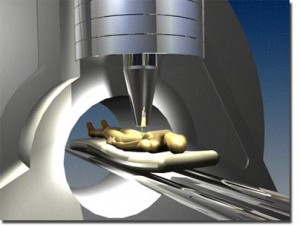By Brian Flora
Guest Writer for Wake Up World
Cancer in the News
Robin Gibbs, famed singer from The Bee Gees, recently lost his battle with cancer and surgical complications. Along with his brothers Maurice and Barry, Gibbs defined a musical era with songs specially written for the movie, Saturday Night Fever. Among his many records hits was “Stayin’ Alive,” now considered the perfect rhythm for performing lifesaving CPR.
Tony Hyler, a 54-year-old CEO of a bagel company from Chicago, met 8-year-old Jada Love Tracy while he was receiving at I.U. Health Proton Therapy in Bloomington, Ind. Hyler was so impressed with little Jada’s spirit as she struggled with a tumor that had found its way to her brainstem that in 2010, Hyler threw Jada the party of a lifetime when he learned her time was growing short. Sadly, Jada lost her fight with cancer last year, but her mom recently arranged a walk against childhood cancer in her hometown of Fort Wayne, Ind.
[pro_ad_display_adzone id=”110028″]
Traditional vs. Alternative
Medical researchers are always looking for new ways to help patients hang in there. For decades, doctors have treated cancer with chemotherapy, surgery and traditional radiation. Today, medical research has introduced many alternative cancer treatments, including immunotherapy in which the patient’s own immune system helps fight cancer. Hyperthermia treatments use heat to kill cancer cells while photodynamic treatments use special chemicals combined with light therapy. Bone marrow and peripheral blood stem cell transplants, laser, blood transfusions and other procedures are becoming more commonplace. Proton therapy, while not new, is emerging as a prominent alternative to cancer treatment.
How Proton Therapy Works
Standard radiation works by shooting a beam of charged particles through a patient’s body. These charged particles destroy cancer cells directly or disrupt their ability to reproduce. The drawback is that organs lying to the front, rear and sides of the cancer cells receive radiation in a way that causes tissue damage and side effects. Doctors reduce this effect by decreasing the strength of radiation, which means the patient must endure several treatments.
Proton therapy delivers a therapeutic dose of radiation to the target cancer cells while sparing surrounding healthy tissue. Proton therapy gets its energy from protons, the positively charged portion of a molecule. A machine extracts the protons from donor material, and then powerful magnets inside the machine accelerate the protons until the protons have just enough energy to travel a pre-determined distance in the patient’s body. The protons emit their payload just before they stop, precisely over the cancerous area.
Benefits of Proton Therapy
Unlike traditional radiation, which emits a steady beam through the patient, proton therapy holds onto its payload until the protons reach their target – cancer cells. Organs lying in front and to the rear of the cancer cells do not receive dangerous doses of radiation. Each patient has an aperture that is individually created for the unique shape and size of his or her tumor, making this a very accurate method of treatment. As a result, patients experience fewer side effects and have more overall energy.
Who Benefits from Proton Therapy
Proton therapy is appropriate for many types of adult and pediatric cancers, such as brain tumors and inoperable brain lesions and tumors near the eye, brainstem or spinal cord. Proton therapy is also suitable for prostate cancer to spare the rectum and bladder from the harmful effects of radiation. Finally, proton therapy is preferred over traditional radiation for childhood cancers because the cells of a child’s body are more sensitive to the detrimental effects of conventional radiation treatments.
Time passes and headlines are made…but cancer doesn’t seem to be going anywhere. Thanks to advances in the treatment of this dreadful disease, though, patients can rest assured that there is hope in what may otherwise seem a frightening time in their lives. Proton therapy is just one of many alternative cancer treatments, and offers more benefits and fewer disadvantages than traditional treatments. If you or someone you know has been faced with a cancer diagnosis, discuss all of your treatment options with your oncologist. Knowledge is power, especially when it comes to fighting cancer.
About the Author
Brian Flora is a health advocate who occasionally writes on behalf of IU Health trying to spread awareness about different types of cancers, diseases, and treatments in hopes that someone out there will benefit from this information.
[pro_ad_display_adzone id=”110027″]







